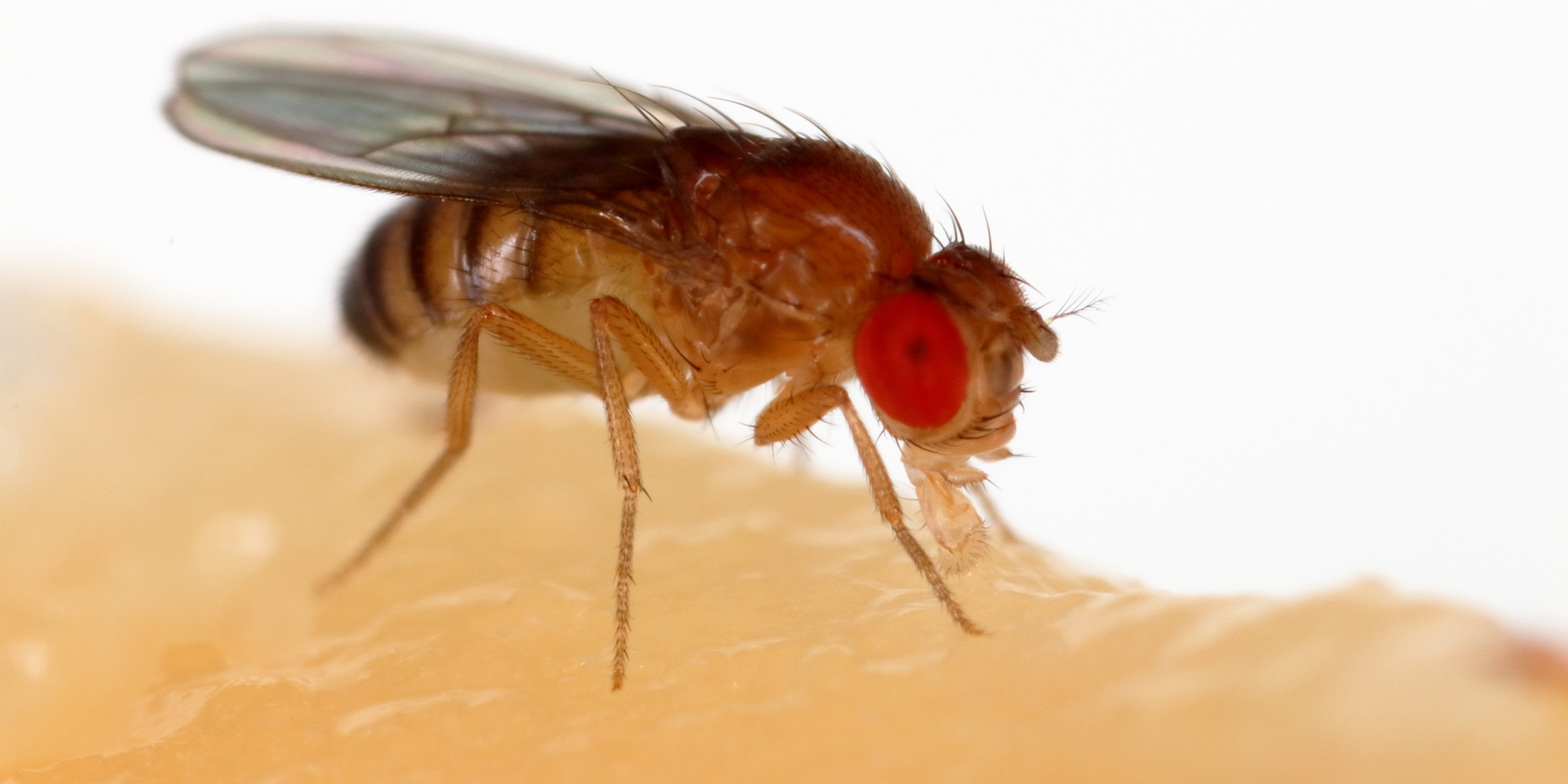Originally published 6 April 1998
I opened the garbage bin under the sink to toss out a grapefruit rind. Out puffed a soft cloud of tiny insects.
Fruit flies! Or more appropriately “yeast flies,” for it is yeasts on which they feed — yeasts growing on decaying fruits or vegetables. As the cloud dispersed about the kitchen, I made a quick run with the garbage container to the compost heap in the yard.
However, I was not as annoyed as I might have been six months ago by this invasion of Drosophila, the “dew lover.” This turnabout in feeling had an accidental beginning.
A colleague came to my office at the college to ask about something or other. She carried a box filled with small glass bottles.
“What’s that?” I asked. Fourteen bottles full of fruit flies, Drosophila melanogaster, the “black-bellied dew lover,” newly purchased for student experiments. Plastic foam stoppers kept the flies in the bottles, which were otherwise open to the air. A nutrient broth covered the bottom of the bottles. In each bottle several dozen flies crawled ceaselessly over a web of nylon fibers.
I lifted out the bottles and read the labels. “White.” “Yellow.” “Wild.” “Vestigial.” “Ebony.” “Dumpy.”
“Wild,” I knew, would be the red-eyed, black-bellied fruit fly found in nature. The others were mutants, created in the laboratory, cultivated in great numbers, and used for breeding experiments in genetics and embryology.
Here was a chance to get to know a famous experimental animal. “Can I borrow them?” I asked. And so it was that six bottles full of fruit flies became my companions for a few days of close observation.
Drosophila mutants have Seven-Dwarfs sorts of names, generally derived from the appearance of the mutant under a microscope (anesthetized with a substance called FlyNap). Who can resist little animals called Dumpy, Curly, Stubble, Spineless, Wrinkled, Bristle, and Scarlet? The mutants in my bottles seemed happy enough; indeed, as happy as their wild cousins. I observed them with a magnifier as they went about their usual fruit-fly activities, blissfully oblivious to their aberrant eye colors and oddly shaped wings.
Drosophila have a number of characteristics that make them ideal experimental animals. They breed fast, producing a new generation in less than two weeks. One female can lay as many as 500 eggs. They occupy little space, yet they are large enough to be easily observed with modest magnification.
Best of all, as the historian of science Robert Kohler points out, they keep an academic schedule: They are most plentiful in the wild in the autumn as the academic year begins; colonies that die out over summer vacation are easily replaced; and they produce a satisfying number of generations during a semester.
The famous geneticist Thomas Hunt Morgan adopted fruit flies as an experimental animal at Columbia University in the early 1910s, and Drosophila studies have been going full tilt ever since. Much of what is known about how genes control the development of embryos has been discovered with the help of this little creature.
Huge questions remain, but the heroic work of generations of geneticists and embryologists have teased from Drosophila a satisfying picture of how a blob of protoplasm differentiates into eyes, mouth, antennae, legs, gut, wings. It’s all chemical, or course, protein magic, DNA wizardry — gradients, cell allocation, selector genes, polarity. Electron photomicrographs of fruit flies show a zillion details — bristles, hairs, a thousand eye lenses — all of which emerge as if by incantation from the proteinaceous soup.
British biologist Peter Lawrence has summarized all this in a book called The Making of a Fly: The Genetics of Animal Design. Here is the best answer we can currently give to the greatest riddle of life: How does a single fertilized egg become a fruit fly, an elephant, a great blue whale, or a human, and get it right almost every time?
Or for that matter, how does a Drosophila egg become a White or a Wild. It takes about 70,000 genes to make a human or a mouse; the plan for a fruit fly is encoded on about 20,000 genes. A fruit fly’s DNA is only about a twentieth as voluminous as our own. But the basic chemical strategies of embryonic development of fly and human appear to have much in common.
There is a wonderful unity to life, founded in common descent, and that’s why the study of fruit flies can tell us much about ourselves.
Lawrence begins his book with an epigraph from Chekhov’s The Three Sisters: “To live and not to know why the cranes fly, why children are born, why the stars are in the sky. Either you know why you’re alive or it’s all nonsense, it’s all dust in the wind.”
Science is about knowing why. In this noble undertaking humans have enlisted the assistance of one of God’s least creatures, the ubiquitous fruit fly. When that cloud of tiny insects puffed out of my garbage bin, I thought of Dumpy, Curly, Stubble, Spineless, Wrinkled, Bristle, Scarlet, and all the rest — ceaseless workers in the quest for knowledge — and knew they weren’t just dust in the wind.



